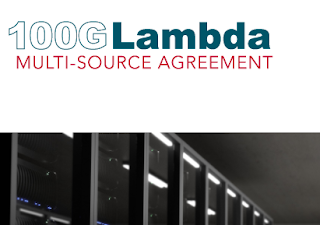AT&T is launching its microservices supplier program in partnership with IBM. The idea is to offer a new approach to delivering business functionality for software developers. AT&T said that it is a heavy user of microservices for its internal systems.
 Under this partnership, IBM will collaborate with AT&T to design, develop and deploy microservices that will transform AT&T’s business backend processes. IBM’s creation of microservices across sales, ordering, and enterprise data will enhance and modernize AT&T’s mission-critical systems. This enables higher-performing backend processing with minimal downtime while allowing the whole business to adapt quickly to changing market dynamics through the deployment of new fast and easy to access services and capabilities.
Under this partnership, IBM will collaborate with AT&T to design, develop and deploy microservices that will transform AT&T’s business backend processes. IBM’s creation of microservices across sales, ordering, and enterprise data will enhance and modernize AT&T’s mission-critical systems. This enables higher-performing backend processing with minimal downtime while allowing the whole business to adapt quickly to changing market dynamics through the deployment of new fast and easy to access services and capabilities.
“Our software journey has focused on virtualizing our network functions to give more speed and flexibility than the traditional hardware model,” said Melissa Arnoldi, president, AT&T Technology and Operations. “We’re now looking at the 2,200+ apps in our IT system. And we’re starting to break them up into microservices to create agility, speed, and scalability that wasn’t possible before. Microservices are at the very core of our vision for the future of our network.”
Earlier this week, AT&T introduced Acumos, an artificial intelligence (AI) platform that makes it easy to build, share and deploy AI applications, built with microservices.
 Under this partnership, IBM will collaborate with AT&T to design, develop and deploy microservices that will transform AT&T’s business backend processes. IBM’s creation of microservices across sales, ordering, and enterprise data will enhance and modernize AT&T’s mission-critical systems. This enables higher-performing backend processing with minimal downtime while allowing the whole business to adapt quickly to changing market dynamics through the deployment of new fast and easy to access services and capabilities.
Under this partnership, IBM will collaborate with AT&T to design, develop and deploy microservices that will transform AT&T’s business backend processes. IBM’s creation of microservices across sales, ordering, and enterprise data will enhance and modernize AT&T’s mission-critical systems. This enables higher-performing backend processing with minimal downtime while allowing the whole business to adapt quickly to changing market dynamics through the deployment of new fast and easy to access services and capabilities.“Our software journey has focused on virtualizing our network functions to give more speed and flexibility than the traditional hardware model,” said Melissa Arnoldi, president, AT&T Technology and Operations. “We’re now looking at the 2,200+ apps in our IT system. And we’re starting to break them up into microservices to create agility, speed, and scalability that wasn’t possible before. Microservices are at the very core of our vision for the future of our network.”
Earlier this week, AT&T introduced Acumos, an artificial intelligence (AI) platform that makes it easy to build, share and deploy AI applications, built with microservices.

















































